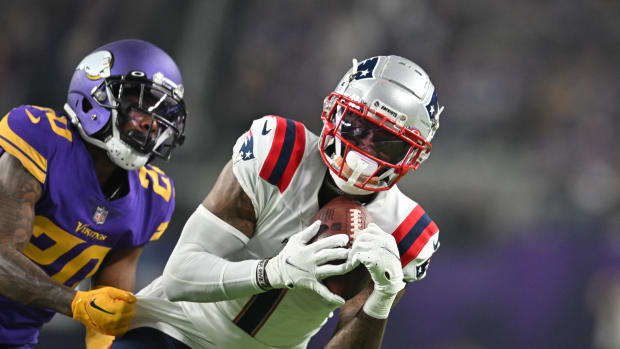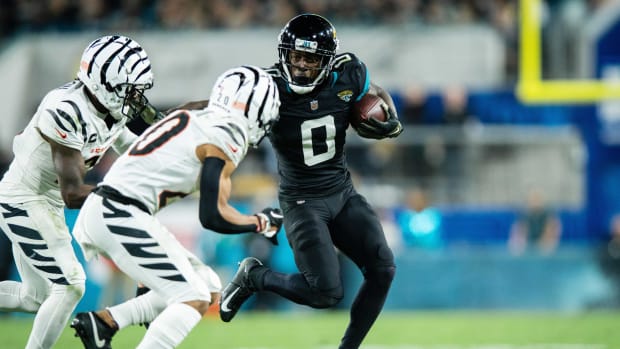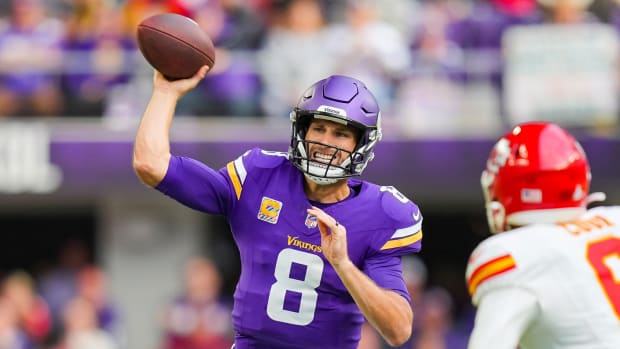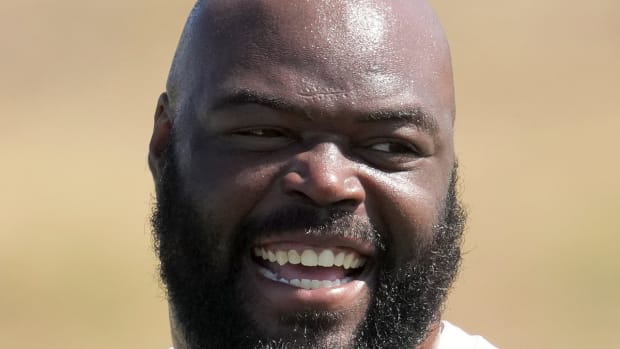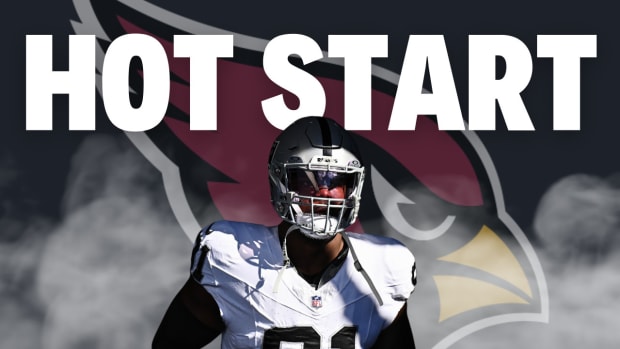Are Concussions, Social Protests, Ratings and Other “Problems” True Threats to the NFL?
There seems to be quite the cottage industry in criticizing the NFL these days and, more broadly, even predicting its eventual demise. The reasons are several, ranging from the damaging effects of concussions and CTE to declining broadcast ratings to ineffective leadership to the current tension between players and owners about social protests. Current news of division in the ownership ranks and Jerry Jones’ faceoff with Roger Goodell has given more oxygen to those cries. As Wilt Chamberlain once said, “No one likes to root for Goliath.”
I thought I would analyze the league’s “problems” so far this season and examine if any are true threats to the league’s continued prosperity and popularity. In my opinion, most are not, but there are concerns ahead.
Concussions/CTE
We bemoan the violence, yet we are drawn to it. We gasp at League of Denial, Concussion or the latest CTE studies. We are outraged when players return from concussive blows before being adequately examined, as this past week with Russell Wilson and Jacoby Brissett. Yet none of this is new; the stories, studies, players “playing through,” documentaries and movies have existed in an era where NFL popularity and prosperity has soared. This is a contradiction that so many of us live with every week: we bemoan head trauma in football (and other sports) yet we do not (or perhaps cannot) turn away.
Concussions have been ingrained in NFL conversation since 2009 Congressional hearings that compared NFL (and NFLPA) leadership to the tobacco industry. I believe that every football player, at every level, should be concerned about the cumulative effect of sub-concussive blows; the science is there on this. I am now seeing this on a personal level watching my son deal with concussion recovery after a collision on the soccer field. Whatever my concerns as a commentator or parent, however, this issue will not bring down football or the NFL.
Concussions are a public health concern, but not a true threat to the NFL.
Social protests
The NFL policy crafted long ago that does not require standing during the national anthem has allowed for tension not seen in a league such as the NBA, where standing is required. Ultimately the games and football stories will drown out the conversation about issues surrounding the game, as is happening with the Ezekiel Elliott saga. (The constant refrain I hear is just tell me if he can play or not!) Networks are covering the anthem less and but for more missives from the Tweeter-in-Chief, the games will win out.
And, as I have said for several months, the best way for owners to have this story subside is for one of them to sign Colin Kaepernick (and his collusion suit would obviously go away). He has always been a much bigger story unsigned than signed.
Ratings
I have never understood knee-jerk reactions to NFL ratings. They can be down or up on one network or another and…so what? In the next round of media negotiations, do we really think FOX/CBS/NBC, etc are going to play hardball with the NFL in negotiations or even opt out of the NFL in favor of other programming? Please. And the NFL is not going to be limited to over-the-air networks in the next round of negotiations; Twitter and Amazon now have tastes of NFL programming; they will be back for more, along with other digital media giants with unlimited funds.
With the changing world of viewer options and content delivery (more below), the true question is how is the NFL doing compared to other sports and entertainment programming? We just had a compelling seven-game World Series between teams in the top four media markets in the country; their average viewership of 18.7 million viewers pales in comparison to a quality NFL game in the late window on a regular season Sunday afternoon (Cowboys-Redskins in Week 8 averaged 22 million viewers). I’m not sure how much, if at all, ratings really matter to future NFL media deals.
Now that I’ve rained on the parade of the “the NFL is in trouble!” crowd and minimized the above threats, I do see a couple of potential threats the NFL’s continued prosperity and popularity.
Restless owners
First, let’s debunk the myth that ownership is going to oust Goodell. Unless I am missing something, all reports of Jerry Jones’s temper tantrum about the Goodell extension have been about process and structure, not whether Goodell is retained. Jones wants the full membership involved rather than just the Compensation Committee and to have the incentive-based compensation in the deal require higher thresholds. Jones’s threats and hiring a lawyer are, to me, an opening salvo of a negotiation to to try to renegotiate some of the proposed terms in Goodell’s contract.
This is not to say, however, that all is well between NFL leadership and NFL owners. Two reported events are cause for concern. First, Texans’ owner Bob McNair, in trying to manage an explosive situation with his players, shined a light on the ownership—or at least a segment of ownership—dissatisfaction with NFL senior executives, saying they, not the players, were the “inmates running the prison.”
Further, a team source confirmed to me the accuracy of an ESPN report that 17 of the 32 owners convened a conference call to discuss NFL leadership from, as he called it, “the top down.” In my ten years in the NFL I never heard of such a call that debated league leadership and for whatever reasons, excluded certain teams from the call.
What does this mean? Perhaps nothing in the long run, but its solution may not be as easy as firing or replacing some senior executives. This bears watching.
‘Jerry Wants to Overthrow Goodell’
Now for the true threat… Millennials
I believe the biggest obstacle facing the future prosperity of the NFL (and all sports leagues) is this: how to attract and maintain younger audiences.
Loosely categorized as millennials, younger audiences have been conditioned to consume content in short bursts on their preferred schedules, not good news for sports such as the NFL that last for hours. With this challenge, however, comes opportunity: sports are the only media property, save for nightly news, best viewed live. Networks—and digital media companies–know the incredible value of live viewing.
Of course, the NFL is quite aware that this is their greatest challenge. They have taken some positive steps such as using split screen advertising and shorter breaks to bring game length down. They will need to be even more aggressive in this area: I believe game length will be closer to two and half hours than three hours in coming years. Teams must continue to improve the game day experience for younger fans, increase partnerships with companies such as Snapchat, and continue to embrace fantasy sports and, potentially, legalized gambling (to be discussed in a future column).
The NFL’s greatest challenge does not involve Commissioner power, social protests, concussions, weekly ratings or injuries to star players. It is this: maintaining its older base of customers while attracting and retaining a younger audience.
So where is the NFL halfway through an eventful and dramatic 2017 season? Well, pay no attention to those shiny objects of the moment. It is the future—not the present—keeping league executives, networks and advertisers up at night. The changing landscape of content consumption is more compelling than the “crisis” of the moment.
Brandt’s Rants
When in Doubt, Sit Out
My concerns over “concussion protocol,” a phrase now in the NFL lexicon, have never been about what happens outside of game day. Rather, how do we properly manage the emotion of the star player and coaching staff in the heat of a game? Of course Russell Wilson and Jacoby Brissett wanted to return to the game immediately: they are players; that is their default setting. Where were the medical professionals protecting them from themselves? Just when you think the NFL has moved past the “playing through” culture of the past, we have more situations like these.
Here’s a suggestion: if a player is removed from play to be checked out for a head injury, he should not play at leastuntil the next seriesof downs. If a player looks like he should still be sitting out, chances are that he should. His brain will thank you later.
Failed marriage
With my experience in the Packers front office for ten years, I took it personally seeing Martellus Bennett’s Instagram rant against team doctor Pat McKenzie and medical staff, a group I trusted implicitly for a decade. And I heard constantly from players that the Packers’ medical staff was the most conservative they had experienced. As an example, I remember negotiating injury settlements where I would offer an agent four weeks of pay (for the period of injury) only to hear: “Well, Pat just said you should give us six weeks!” Pat never sacrificed the integrity of the job for short-term needs on the cap or team.
Time will tell if the Packers pursue a grievance to recover some or all of Bennett’s $6.3 million signing bonus given due to failure to disclose previous shoulder issues. There is a definite sense of betrayal in Green Bay regarding Bennett.
Knowing him as I do, my immediate football-related thought on Bennett was that Ted Thompson is going to be even more reluctant to tread in what he called the “dangerous waters” of free agency. The “draft and develop” philosophy will become even more ingrained in the Packer Way going forward.
































